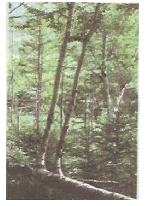Advertisements
Advertisements
Question
While conducting experiments to study the effect of various stimuli on the plants, it was observed that the roots of a plant X grow and bend towards two stimuli A and B but bend away from a third stimulus C. The stem of the plant X, however, bends away from stimuli A and B but bends towards the stimulus C. The stimulus B is known to act on the roots due to too much weight of the earth. Keeping these points in mind, answer the following question:
- What could stimulus A be?
- Name the stimulus B.
- What could stimulus C be?
- The branches of a fallen tree in a forest grow straight up in response to two stimuli. What could be these two stimuli out of A, B and C? Also name these two stimuli.
Solution
- The stimulus A is water.
- The stimulus B is gravity.
- The stimulus C is light.
- The two stimuli responsible for the straight growth of the branches of a fallen tree are B and C, i.e., gravity and light, respectively.
APPEARS IN
RELATED QUESTIONS
To which directional stimuli do roots respond?
Plant roots grow ______ and in the direction of force of ______.
What is meant by positive tropism and negative tropism? Explain with examples.

A big tree falls in a forest but its roots are still in contact with the soil.
The branches of this fallen tree grow straight up (vertically). This happens in response to ______.
What is chlorophyll?
Assertion: Plants do have a nervous system for control and coordination.
Reason: Plants use electrochemical means to convey information from cell to cell.
The growth of pollen tubes towards ovules is due to
The venus flytrap plants are examples of ______.
Write the scientific terms used to represent the following:
Bending of roots towards the water.
Name a plant hormone responsible for bending of a shoot of a plant when it is exposed to unidirectional light. How does is promote phototropism?
